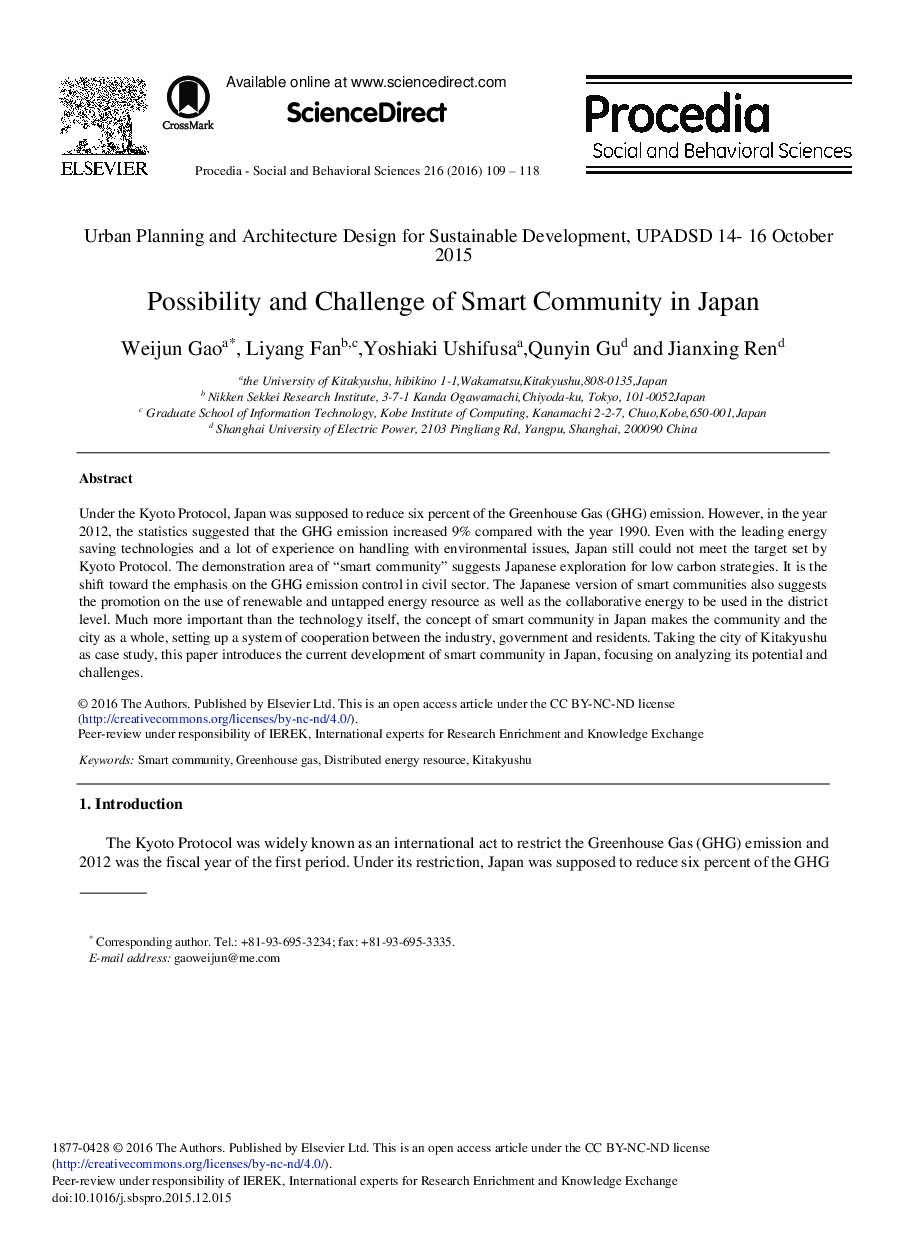| Article ID | Journal | Published Year | Pages | File Type |
|---|---|---|---|---|
| 1108720 | Procedia - Social and Behavioral Sciences | 2016 | 10 Pages |
Under the Kyoto Protocol, Japan was supposed to reduce six percent of the Greenhouse Gas (GHG) emission. However, in the year 2012, the statistics suggested that the GHG emission increased 9% compared with the year 1990. Even with the leading energy saving technologies and a lot of experience on handling with environmental issues, Japan still could not meet the target set by Kyoto Protocol. The demonstration area of “smart community” suggests Japanese exploration for low carbon strategies. It is the shift toward the emphasis on the GHG emission control in civil sector. The Japanese version of smart communities also suggests the promotion on the use of renewable and untapped energy resource as well as the collaborative energy to be used in the district level. Much more important than the technology itself, the concept of smart community in Japan makes the community and the city as a whole, setting up a system of cooperation between the industry, government and residents. Taking the city of Kitakyushu as case study, this paper introduces the current development of smart community in Japan, focusing on analyzing its potential and challenges.
